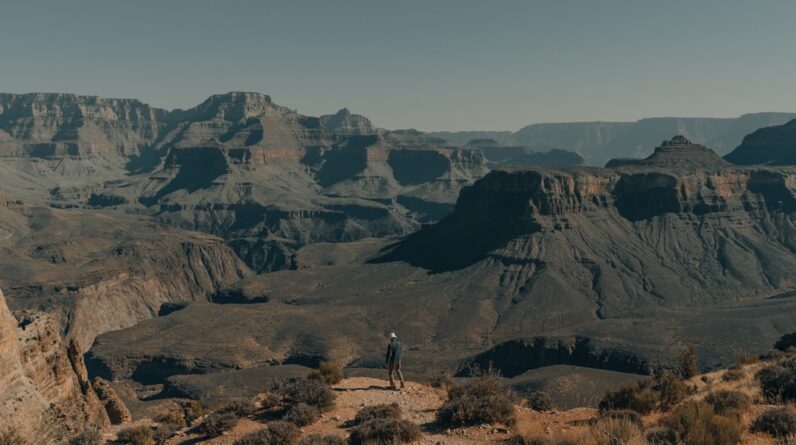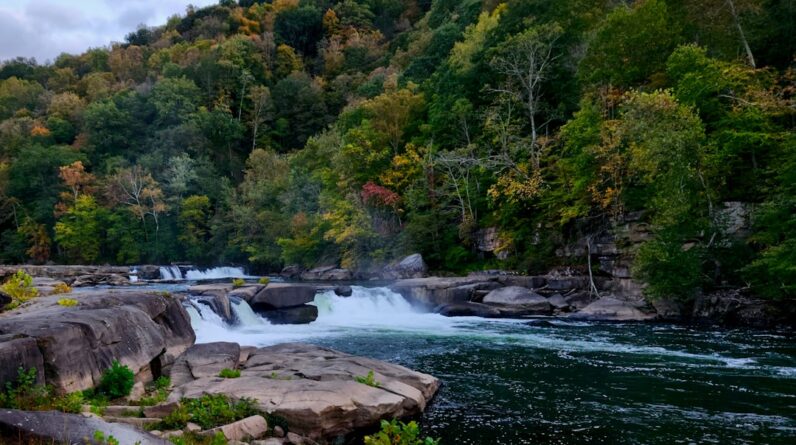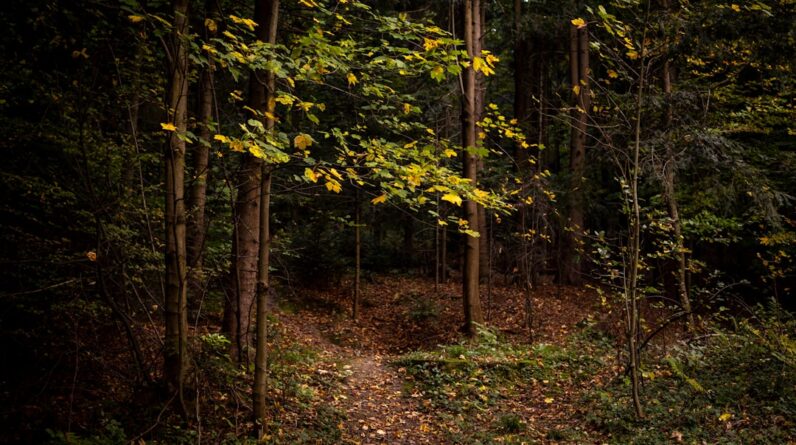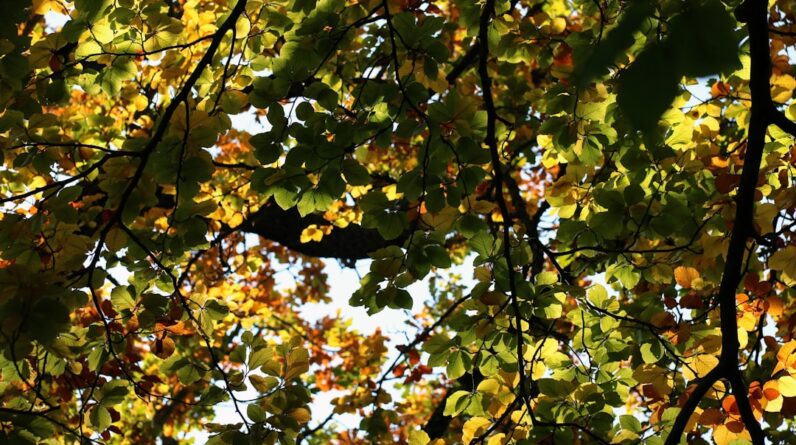Kakabeka Falls, located in Ontario, Canada, is a natural wonder that has captivated visitors for centuries. With its breathtaking beauty and rich geological history, the falls offer a unique opportunity to explore the wonders of the natural world. Understanding the geological history of Kakabeka Falls is not only fascinating but also crucial in unraveling the mysteries of the past and appreciating the beauty of this remarkable site.
Key Takeaways
- Kakabeka Falls has a rich geological history that spans over 1.6 billion years.
- The unique rock formations at Kakabeka Falls are a result of volcanic activity and erosion.
- The power of water has shaped the landscape of Kakabeka Falls over millions of years.
- Kakabeka Falls is a natural wonder that offers insights into the Earth’s past.
- Hiking and exploring Kakabeka Falls is a geological adventure that allows visitors to witness the beauty of time.
A Journey Through Time: Discovering the Geological History of Kakabeka Falls
To truly appreciate the geological wonders of Kakabeka Falls, it is important to understand its history. The area surrounding the falls has a rich geological history that dates back millions of years. It was formed during the last ice age when glaciers covered much of North America. As the glaciers retreated, they left behind deep valleys and carved out the path for rivers and waterfalls.
The formation of Kakabeka Falls can be attributed to the erosion caused by these glaciers. As the glaciers melted, large volumes of water flowed through the area, carving out a deep gorge and creating the majestic waterfall that we see today. This process took thousands of years and shaped the landscape into what it is today.
Exploring the Unique Rock Formations at Kakabeka Falls
One of the most fascinating aspects of Kakabeka Falls is its unique rock formations. The falls are surrounded by layers of sedimentary rock, which provide valuable insights into the geological history of the area. These rock formations include sandstone, shale, and limestone, each with its own distinct characteristics.
Sandstone is a common rock formation found at Kakabeka Falls. It is composed of sand-sized grains that have been compacted and cemented together over time. Shale, on the other hand, is a fine-grained sedimentary rock that is formed from mud or clay particles. Limestone is another prominent rock formation at Kakabeka Falls, characterized by its high calcium carbonate content.
These rock formations are important in understanding the geological history of the area because they provide clues about the conditions that existed millions of years ago. By studying the composition and structure of these rocks, geologists can gain insights into the ancient environments and processes that shaped the landscape.
The Power of Water: How Kakabeka Falls Shaped the Landscape
Water has played a significant role in shaping the landscape around Kakabeka Falls. The powerful force of the water rushing over the falls has eroded the surrounding rock and created the deep gorge that we see today. Over time, this erosion has shaped the landscape, creating unique features such as potholes and plunge pools.
Potholes are cylindrical holes that are formed by swirling water carrying rocks and sediment. As these rocks and sediment are carried by the water, they create circular depressions in the bedrock. Plunge pools, on the other hand, are deep pools of water that form at the base of waterfalls. These pools are created by the erosive force of the falling water, which excavates the rock and creates a basin.
The power of water in shaping geological features cannot be underestimated. It is through this process of erosion that Kakabeka Falls has become the magnificent natural wonder that it is today.
A Natural Wonder: Uncovering the Secrets of Kakabeka Falls
Kakabeka Falls is not only known for its stunning beauty but also for its unique features. One of these features is a natural bridge that spans across part of the falls. This bridge was formed through a combination of erosion and deposition, as water carved out a channel and deposited sediment to create a land bridge.
Another unique feature of Kakabeka Falls is its potholes. These cylindrical holes, as mentioned earlier, were formed by swirling water carrying rocks and sediment. They provide valuable insights into the erosive power of water and the geological processes that have shaped the landscape.
Time Traveling Through the Ages: Tracing the Evolution of Kakabeka Falls
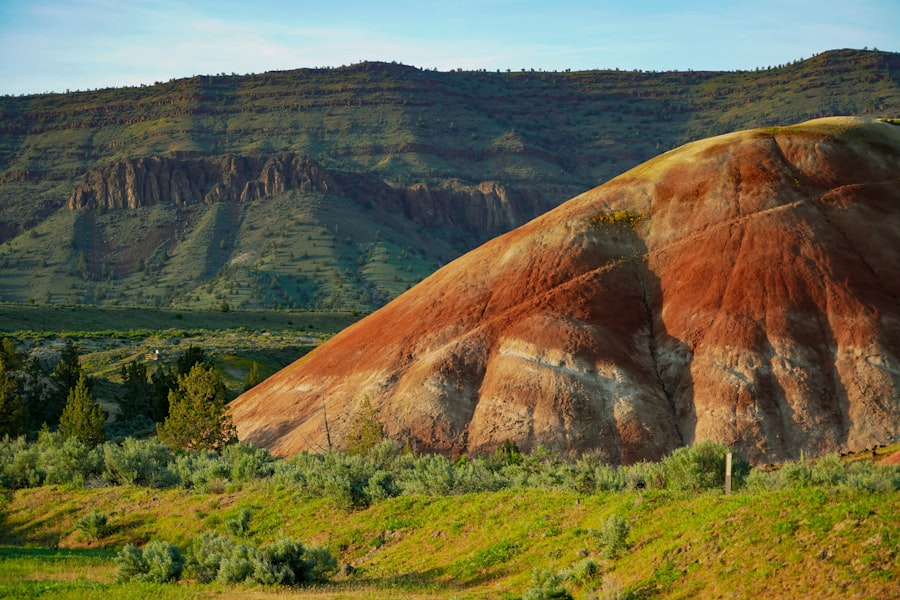
Over time, Kakabeka Falls has undergone significant changes. The falls were once much larger and more powerful than they are today. As the glaciers retreated and the volume of water flowing through the area decreased, the falls gradually became smaller and less forceful.
Understanding these changes is crucial in studying the geological history of Kakabeka Falls. By tracing the evolution of the falls, geologists can gain insights into the processes that have shaped the landscape over millions of years.
The Science Behind Kakabeka Falls: Understanding the Geology
The formation of Kakabeka Falls can be explained by several scientific principles. One of these principles is erosion, which is the process by which water, wind, or ice wears away rocks and soil. In the case of Kakabeka Falls, it was the erosive force of water that carved out the deep gorge and created the waterfall.
Another important principle is deposition, which is the process by which sediment is laid down in a new location. This process is responsible for creating features such as potholes and plunge pools at Kakabeka Falls.
A Geological Adventure: Hiking and Exploring Kakabeka Falls
Visitors to Kakabeka Falls have the opportunity to explore its geological wonders firsthand through hiking and exploration. The park offers several hiking trails that allow visitors to get up close and personal with the falls and its surrounding rock formations.
One popular trail is the Little Falls Trail, which takes visitors on a journey through a forested area to a smaller waterfall upstream from Kakabeka Falls. Another trail, called the Mountain Portage Trail, offers panoramic views of the falls and takes visitors on a journey through diverse ecosystems.
By experiencing Kakabeka Falls firsthand, visitors can gain a deeper appreciation for its geological history and the natural wonders of the area.
The Beauty of Time: Admiring the Natural Wonders of Kakabeka Falls
Beyond its geological significance, Kakabeka Falls is also a place of immense beauty. The sight of the water cascading over the falls, the sound of its roar, and the mist that fills the air create a truly awe-inspiring experience.
The falls are surrounded by lush forests and diverse wildlife, adding to its natural beauty. Visitors can witness the changing colors of the leaves in the fall, the vibrant wildflowers in the spring, and the frozen beauty of the falls in winter.
Appreciating the natural wonders of Kakabeka Falls is not only a visual delight but also a reminder of the power and beauty of nature.
The Mysteries of Kakabeka Falls: Unraveling the Secrets of the Past
While much is known about the geological history of Kakabeka Falls, there are still many unanswered questions. For example, geologists are still trying to understand how exactly the falls were formed and what factors contributed to their unique features.
Continued research and exploration are crucial in unraveling these mysteries and gaining a deeper understanding of the geological history of Kakabeka Falls. By studying the rocks, sediment, and other geological features, scientists can piece together the puzzle of this remarkable natural wonder.
A Geological Playground: Discovering the Wonders of Kakabeka Falls
In conclusion, Kakabeka Falls is not only a stunning natural wonder but also a geological playground that offers a unique opportunity to explore the wonders of our planet’s history. Understanding its geological history is not only fascinating but also crucial in unraveling the mysteries of the past and appreciating the beauty of this remarkable site.
Visiting Kakabeka Falls and experiencing its geological wonders firsthand is an adventure that should not be missed. Whether hiking along its trails, admiring its unique rock formations, or simply taking in the breathtaking beauty of the falls, there is something for everyone to enjoy. So, pack your bags and embark on a journey to Kakabeka Falls to discover the wonders of our planet’s geological history.
If you’re interested in exploring geological wonders, you might also enjoy reading the article “The Age of Enlightenment: Mental Wellness and Mindfulness Practices for Seniors.” This insightful piece discusses the importance of mental well-being and mindfulness practices for seniors, highlighting how these practices can contribute to a fulfilling and enriching life. Discover how incorporating mindfulness into your daily routine can enhance your overall well-being and help you navigate the challenges that come with aging. Read more




